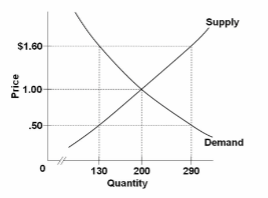Suppose Erie Textiles can dispose of its waste "for free" by dumping it into a nearby river. While the firm benefits from dumping waste into the river, the waste reduces fish and bird reproduction. This causes damage to local fishermen and bird watchers. At a cost, Erie Textiles can filter out the toxins, in which case local fishermen and bird watchers will not suffer any damage. The relevant gains and losses (in thousands of dollars) for the three parties are listed below. WithFilterWithoutFilterGains to Erie$200$400Fisherman$180$50Bird Watchers$130$25 Suppose that Erie Textiles can only negotiate with one of the affected groups. Will Erie operate with a filter?
A. No, regardless of which group they negotiate with.
B. Yes, if they negotiate with the Bird Watchers, but not if they negotiate with the Fishermen.
C. Yes, if they negotiate with the Fishermen, but not if they negotiate with the Bird Watchers.
D. Yes, regardless of which group they negotiate with.
Answer: A
You might also like to view...
Contemporary observers of slavery such as Cassius M. Clay and Frederick Law Olmstead suggested that:
a. slave labor was much less productive than white labor. b. slave labor was much more productive than white labor. c. slave labor and white labor were equally productive. d. slave labor in the agricultural setting was more productive than slave labor in the manufacturing setting.
Assume the real U.S. GDP in 1997 was $7,269 billion and the U.S. population was 268 million, and the real U.S. GDP in 1998 was $7,552 billion and the U.S. population was 270 million. From 1997 to 1998, the per capita real GDP
A. Remained unchanged. B. Increased. C. Decreased. D. Cannot be determined from the information given.
Frank purchases snickle-dees only because his friends do. This is a
A. dominant strategy B. negative-sum game. C. positive market feedback. D. negative market feedback.
Refer to the diagram. A surplus of 160 units would be encountered if the price was:

A. $1.10, that is, $1.60 minus $.50.
B. $1.60.
C. $1.00.
D. $0.50.